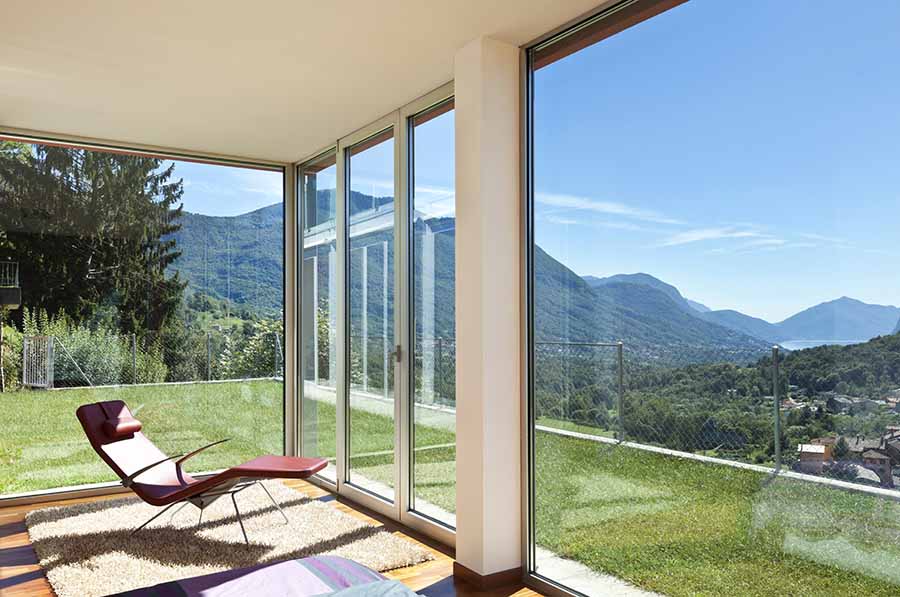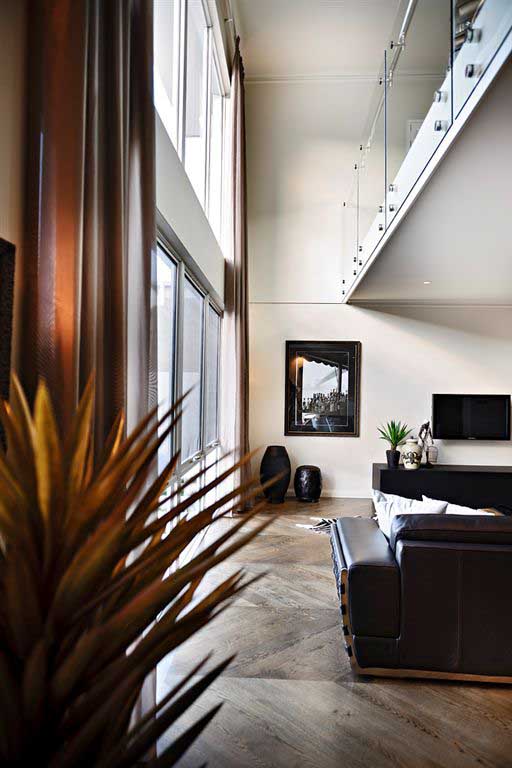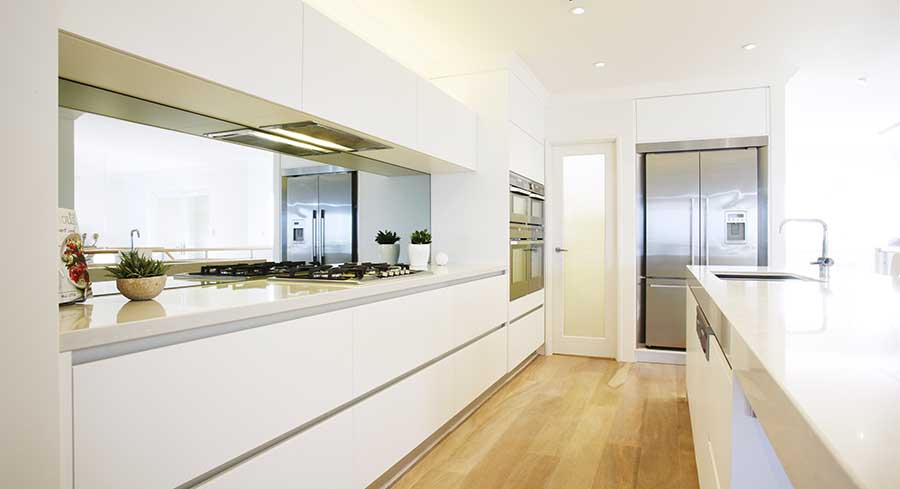Glass is a highly versatile material due to its superior workability where it can be moulded or blown during melting into countless shapes. This, coupled with the many types of glass used in construction, gives glass near-endless potential when it comes to transforming a space whether practically or aesthetically.
With recent technological advances pushing the possibilities even further, understanding the benefits of using glass in interior design is now a necessity if you want to make the best use of this adaptable material.
1. Glass Incorporates the Outside Environment Indoors
We all know that interior design revolves around reshaping the indoors of a structure. But what if designers want to expand the interior aesthetics beyond the manmade or the modern elements?
This is where glass shines through! In fact, glass is often mentioned along with the phrase “inviting the outside in” to highlight its infamous transparency.

As such, using glass is the go-to method for incorporating a sense of flow and creating a seamless connection between the interior and exterior environments of any structure.
Consequently, using glass allows designers to enhance the spatial qualities of a room. In other words, glass can make any area look bigger due to the “openness” that this clear material offers. Interior designers often apply this concept when trying to achieve a minimalist style or to declutter a certain space.
Another advantage of inviting the outdoors in is that you get to incorporate nature as part of your interior design. For example, having a glass window that overlooks a pond, a forest, or some sort of natural element in an outdoor setting allows you to draw from nature using a literal view.
The same idea can be applied to introduce a modern aesthetic to the interior design when using views of buildings, townhouses, skyscrapers, or other elements of urban environments.
The following are some of the most popular glass components used to bring such unique effects to interior design:
Glass roofs: both practical and stylish, glass roofs offer access to external rooftop spaces while delivering an aesthetic element like no other.
Available in fixed and opening options, glass roofs allow designers to utilize spaces that lie above an interior area in their design as long as there’s an uninterrupted line of sight.
Thanks to the provided view of the sky, glass roofs also function as an independent source of powerful light that can possibly eliminate the need for additional light sources. This, in turn, gives designers a wider range of Interior lighting plans to work with.
Glass walls: nowadays, glass walls no longer require thick supporting frames that deem them bulky or obstructive. Instead, completely frameless panels are available in almost any size to serve the needs of just about any interior design.
The main benefit of using glass walls is to produce a form of horizontal continuity. Compared to the framed view you can get with a simple glass window, expansive glass walls create the illusions that the indoor space extends beyond its true size.
2. Glass Allows Natural Light Inside

Humans require natural light to maintain a healthy lifestyle, especially with conditions such as Seasonal Affective Disorder (SAD) becoming more prevalent. SAD affects the ways our bodies react to external stimuli (including natural light) as the seasons change.
Moreover, it’s a scientific fact that natural light is important for the wellbeing of humans whether mentally, psychologically, or physically.
For these reasons, lighting is regarded as a crucial aspect of interior design, so much so that a poor job of introducing adequate lighting can deem the entire interior plan as a fail.
Fortunately, the inclusion of natural light in interior design is one of the most evident benefits that glass features have to offer. Incorporating glass panels in various structures (windows, roofs, walls) can flood the interior space with natural light so it doesn’t just look good, but also makes the people in it feel good.
The presence of adequate sunlight throughout the day is particularly crucial in central rooms and practical spaces indoors such as kitchens and bathrooms. Smart interior design should pay extra attention to the inclusion of natural lights in these areas.
Furthermore, let’s not forget that natural light also provides significant aesthetic benefits to interior design. Daylight has a prominent effect on colour perception, considered the go-to source of lighting for designs that adopt “true colour”.
For example, north-facing rooms will receive lighting of a warmer tone which highlights the best features in dark shades. As for south-facing rooms, natural light will bring out lighter shades and even washout colours.
To put it simply, colours just look more real and pleasing to the eye when naturally lit.
3. Glass Supports Practicality
When it comes to practicality in interior designs, glass features don’t disappoint. Whether it’s a client asking for kitchen splashbacks, shower screens, or a huge living room to accommodate many guests, designers almost always find the required framework of practicality in glazing.

For example, if a room needs internal or external access, a modern glass solution can be a sliding door or even floor and roof panels. This won’t just provide access, but it also won’t force you to compromise a source of natural light for an entry point.
Another example of enhanced practicality is ventilation and insulation, which are aspects that the best designers must consider in their plans. It doesn’t have to be complicated, sometimes a breeze of fresh air passing through a room via a simple window is all that’s needed to transform it into an airy and welcoming space.
The same concept goes for heating, as modern glass technology such as hi tech coatings and solar gain can improve the insulative action of glass to effectively heat an area using sunlight. This allows designers to create interiors free of the bulky, unattractive appearance of traditional radiators.
4. Glass Offers Timeless Appeal
Interior designs should definitely look good, but the established aesthetics shouldn’t be restricted to one style or period.Glass can create a long-lasting visual impression that translates into a powerful environment throughout the years with a balanced ambience.
This is a key benefit for designers looking to combine aesthetics with timelessness in their interior plans.
5. Interior Glass Art
Using glass artwork as an interior design element can be significantly better than other methods such as canvas art, either printed or even an original. This is because printing onto glass using new processes such as ceramic in-glass printing, lasts for decades even in direct sunlight. This is due to its incredible UV stability.
This allows designers the freedom to be able to place artwork anywhere in an interior, even by windows that are subject to direct sunshine.
Wrap Up
There’s a whole lot more we can say about glazing, but the benefits of using glass in interior design speak for themselves.
As a highly versatile material, glass offers many visual and practical advantages that essentially provide designers with all the potential they need to create interiors in the most unique ways. Whether it’s to flood a room with natural light or add a simple access point, glass features are here to stay.

